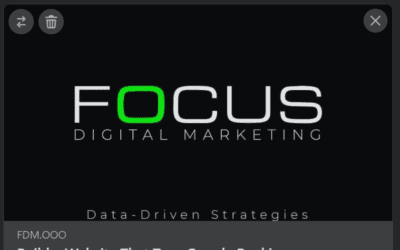There are two distinct ways in which we, as individuals, contribute data. One is through submitted data, while the other is through behavior.
We have software that can scrape the web and build databases based on submitted data, which is extremely valuable for email and standard mail campaigns. However, we do not have direct access to behavioral data. This type of data encompasses the actions and behaviors individuals exhibit in their daily lives.
Let’s consider a night out where your credit card is swiped at a high-end steakhouse, where each plate costs around $75. Your bill totals $192. Later, you use your phone to search for a hotel in the city and schedule an Uber Black to travel there. While these actions may seem arbitrary, they provide valuable insights into who you are. Several assumptions can be made based on this data: You are away from home (indicated by your phone’s GPS, Uber, and hotel search), you have a preference for luxury experiences (as evidenced by booking an Uber Black and your restaurant choice), and you likely enjoy alcohol (given the total bill aligning with two people having dinner and drinks). Using this data and these assumptions, you can be shown targeted ads the following morning, such as luxury shopping options in the city, local entertainment, and events. As you click, swipe, and visit various places, the picture of who you are becomes clearer, allowing for further optimized ads. This is all behavioral data, which is vastly different from the submitted data. Submitted data includes information such as the job title you selected on your Facebook page, your house deed at the courthouse, or an online resume you submitted years ago. While valuable, submitted data represents a much broader demographic.
Behavior data makes Facebook ads an interesting avenue to explore, although many businesses try them and fail to get results. The common mistake is investing a grand or 2 for a month and then abandoning the idea when it doesn’t yield immediate success. What they fail to realize is that Facebook ads require a long-term commitment and are costly. You might think that Facebook ads won’t work for your industry because your customer base doesn’t consist of kids or doesn’t fall into any assumptions you make about Facebook ads. However, the truth is that nearly everyone has a Facebook presence, regardless of their background or occupation, whether they are a Fortune 100 CEO or a farmer. This means that almost everyone sees ads while scrolling through Facebook. Many of these ads are poorly done and fail to target the audience effectively. But occasionally, you come across an ad that is perfectly tailored to your interests and compels you to click, make a purchase, or take some action. This is where the long game comes into play.
Facebook offers “lookalike audiences” that it creates on your behalf, based on the results you achieve. Let’s say you establish a preliminary set of demographic criteria and allocate a $5,000 monthly budget. In the first month, you might see minimal results, perhaps around five unique visitors who convert into customers. In the second month, that number increases to 12. At this point, you might feel inclined to give up, as many businesses do. However, in the third month, you gain nine more customers, and you receive a notification about the availability of the Lookalike audience in the ads manager. This means that Facebook has collected enough data about the people that have clicked your ads and can find enough commonalities between them to create a new audience based on the behavioral data Facebook collects about its users. From this point on, Facebook’s targeting becomes increasingly precise. In this scenario month four yields even more customers, with more data available, Facebook fine-tunes its targeting even further, continuously optimizing your ads for maximum results. By the sixth month, Facebook ads will have become a powerful lead-generation tool, providing a continuous flow of leads. This is why campaigns that we manage require a minimum of a six-month plan with a budget of no less than $12,000, allocating $2,000 per month and during the first three months the expectations are very minimal.
When executed properly, we have had businesses grow drastically. One business we helped late last year began with about $200k per month in sales. Over the course of 8 months, they grew to over $700k per month, and even then, they were limited to continued growth by their own infrastructure. While Facebook ads may not be the solution for every business, those are few and far between. The only downside is that you really need to have the cash flow to fund the entire campaign in the beginning, and this is difficult for some startups and smaller businesses to commit to. But for those that can afford it, it is a strategy that we highly recommend.
What About Google Ads?
With over 20 years of experience in the marketing industry, we have witnessed significant transformations, and one platform that has undergone many changes—though not all necessarily positive—is Google Ads. Not to be confused with Google Business Profiles which we...








